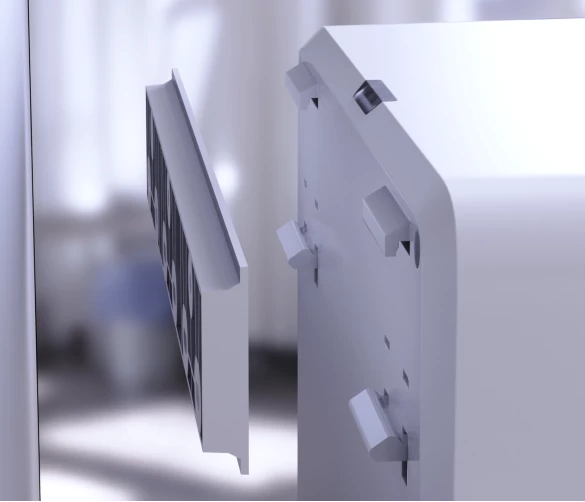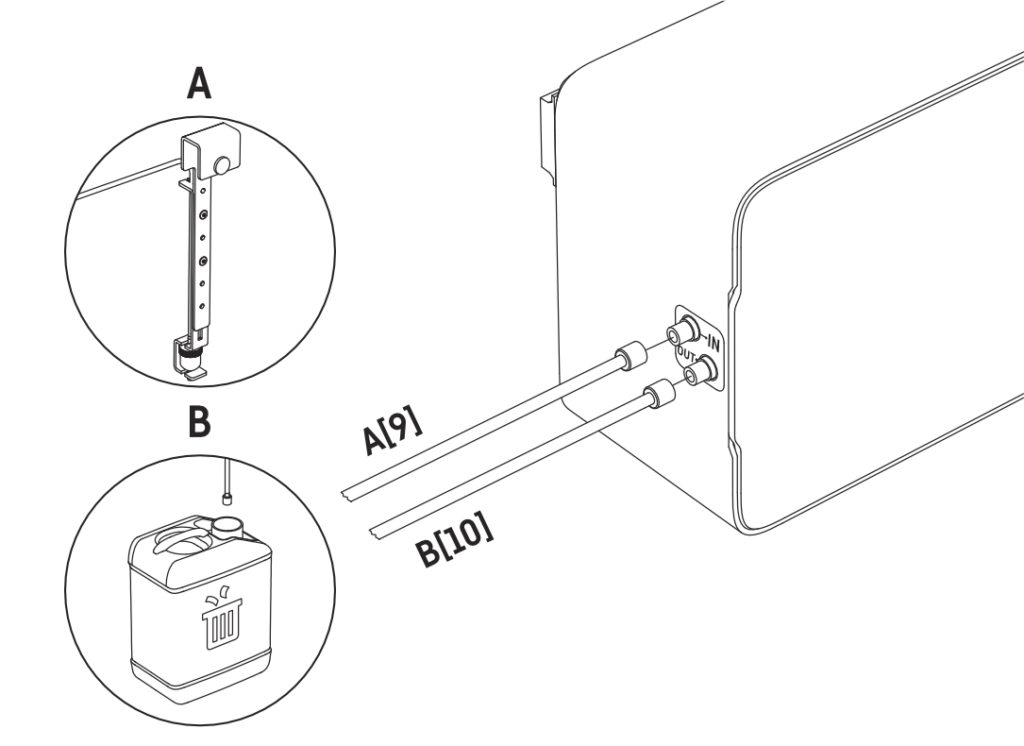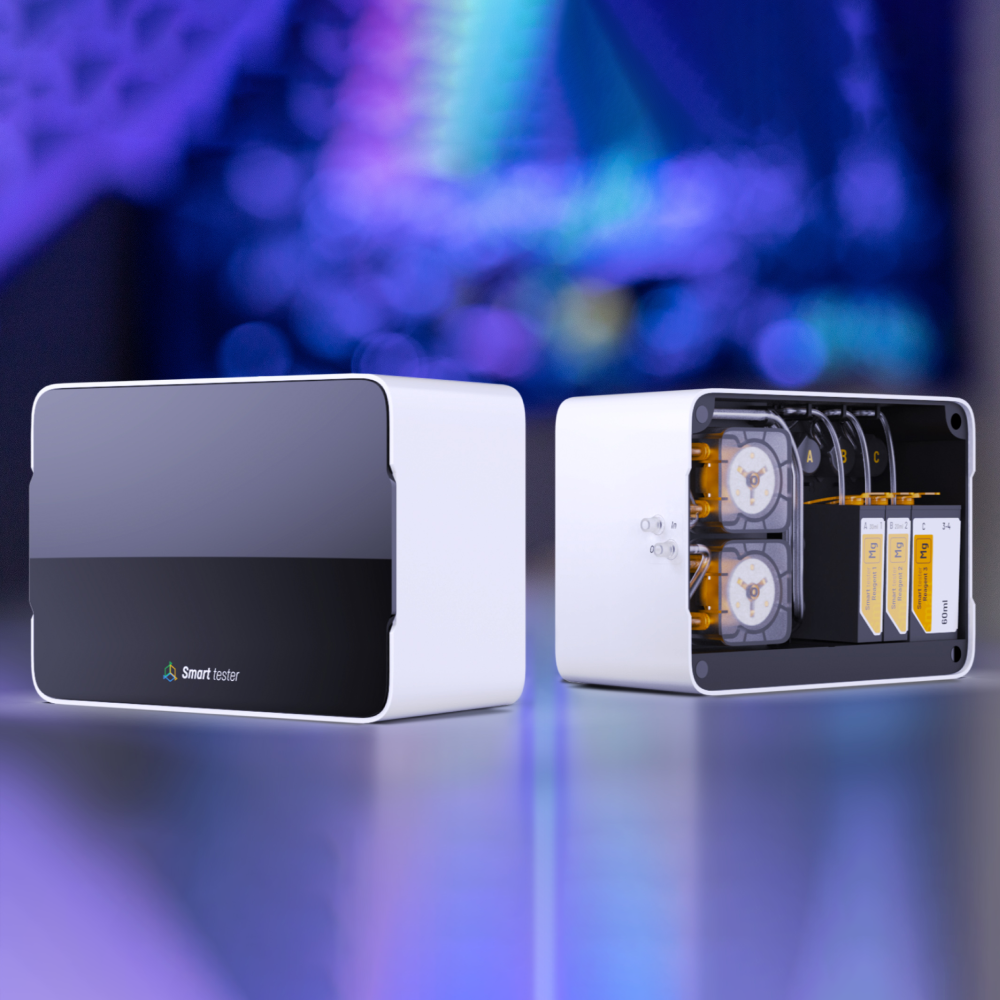Mounting the device on a DIN rail
The Smart tester has a DIN rail, which we mount in the cabinet or outside the cabinet then mount the Smart tester on this.

The Smart Tester should not be placed above an aquarium, SUMP or other water tank so that if the unit fails, the water tank is not contaminated.
The Smart Tester should not be placed higher than 1m above the level of the water table of the sump or aquarium (depending on which water we are drawing from). Otherwise, the Smart Tester’s pumps may have problems taking a water sample.
Connecting the hoses

Attach a silicone hose to the aquarium water connection “IN” and immerse it in the place from where the water sample is to be taken.
Attach a silicone hose to the “OUT” waste water connection and place it in the waste water tank.
Do not place the silicone hose connected to the “OUT” waste water connection in the aquarium. Waste water contains the chemical transformation effects of the water sample and chemical reactants and can be poisonous to living creatures in the aquarium.
The hose supplying the water sample should not be longer than 2m. Otherwise, the Smart Tester may have problems collecting the water sample.
In the case of PO4 measurement, a water supply hose can be installed from the aquarium without a filter. As a result of accumulated biological matter, the filter may slightly interfere with the measurement value.
Other tips for mounting the device
- Do not rotate the Smart tester during the test as in standby mode. The water sample in the measuring cuvette or its residue may spill out and contaminate the measuring sensor, the reference light source or leave streaks on the measuring cuvette after the resulting water droplets have evaporated. For transport, the measuring cuvette should be completely dried.
- After the calibration process, the Smart tester should not change location or position (see section Calibration of the measuring cuvette / Calibration of the measuring cuvette).
- The Smart tester should not be exposed to sudden temperature changes. The Smart Tester should not be placed near fans, heaters, air conditioners or other components that generate heat during their operation. The Smart Tester should not be exposed to direct sunlight or air drafts. A sudden change in ambient temperature during measurement can increase the measurement error.
- The Smart Tester should not be illuminated by a strong light beam. The Smart Tester should not be illuminated by halogen lamps, LED lamps or other light sources. The Smart Tester should not be exposed to direct sunlight. The Smart Tester uses light to test a water sample. Any external strong light source can penetrate the measuring chamber and cause measurement error.

